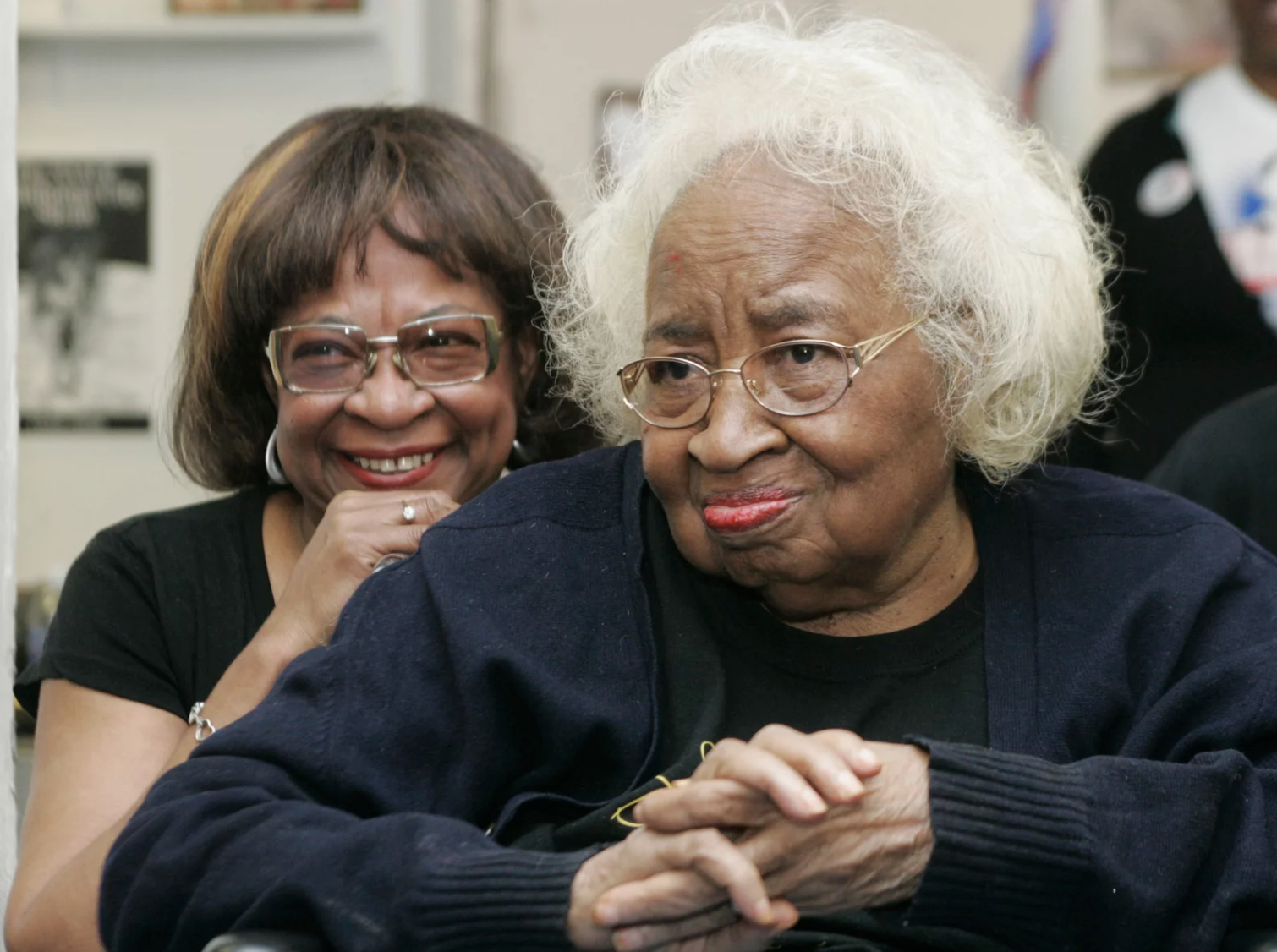How a history teacher and 13 Black students shaped the civil rights movement
Civil rights leader Clara Luper poses with a photograph from her scrapbooks at a community center in Oklahoma City, Okla., in August 1983. Source: DLL Associated Press
Sixty-four years ago Friday, 13 Black students sat at a whites-only lunch counter in downtown Oklahoma City, shaping the course of the civil rights movement.
Other sit-ins, like the Feb. 1, 1960, protest by four Black college at Woolworth in Greensboro, N.C., were better known in the fight to end segregation.
But 17 months earlier, on Aug. 19, 1958, Clara Luper, an Oklahoma City history teacher and NAACP Youth Council adviser led the group of younger students to a Katz Drug Store. Ten-year-old Marilyn Luper Hildreth, her oldest daughter, was one of them. She spoke to NPR about the memories of that day.
"When we sat down they asked us what do we want, and we told them we wanted to be served and they informed us that they didn't serve coloreds," Hildreth said. "So, we just sat there until they decided to serve us."
Under Luper's advice, the students remained seated and quiet, even as white customers yelled, cursed and spit at them.
"When people would spit on us our responsibility was to turn our heads and keep our cool," Hildreth said.
After three consecutive days of action, Katz Drug Store served the 13 Black children and integrated its lunch counter.
A 10-year-old got the idea from her travels North
Hildreth didn't just participate in the sit-in — she initiated it. She got the idea from an eye-opening trip to New York City with her mother.
Luper was one year into her role as an NAACP Youth Council adviser when she took several students to New York City to perform a play she wrote, Brother President.
"In many ways I think my mother was a genius," Hildreth said. "She planned for us to go the northern route and you have to understand that Oklahoma had some of the most segregated laws on their books."
For many students, it was the first time they had left Oklahoma. In the South, because of Jim Crow laws, it was their first time experiencing restaurant and hotel service.
"As Harriet Tubman would say, 'A little bit of freedom is a dangerous thing,' " Hildreth said.
Hildreth wanted the same treatment in her home state.
"We were in a NAACP Youth Council meeting and I made the motion that we would go down to Katz Drug Store and sit down until they served us," she said.
That is what they did.
Civil rights activist Marilyn Luper Hildreth (left) and her mother, Clara Luper watch the inauguration ceremony of former President Barack Obama from the NAACP Freedom Center in Oklahoma City in January 2009. Source: Sue Ogrocki, Associated Press
Oklahoma remembers Luper's legacy
Clara Luper's success ignited a series of sit-ins and marches across Oklahoma, and she quickly became a notable civil rights activist, ran for the U.S. Senate and continued to teach. State residents refer to her as the mother of Oklahoma's civil rights movement.
She advocated for human rights and racial equality until her death in 2011, but her contributions to the civil rights movement have rarely been credited or acknowledged — until now. Last year Oklahoma City launched Freedom Fiesta, an annual three-day celebration honoring Luper and the legacy of the Katz Drug Store sit-in.
"We're going to make sure that history reflects what we did here in Oklahoma City," Hildreth said.
Eleven of the 13 children who sat at the counter 64 years ago are alive today and continue to tell Luper's story. Hildreth said she is confident her mother will gain broader recognition one day.
"She would say all the time, 'I want you to believe in the sun when the sun didn't shine and to believe in the rain when the rain didn't fall and to believe in the God that we've never seen,' " she said. "That's the way that she would want to be remembered."
Source: Destinee Adams, NPR


